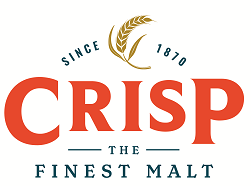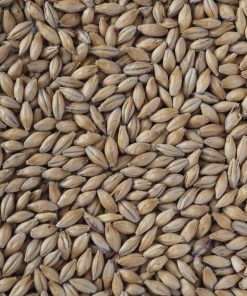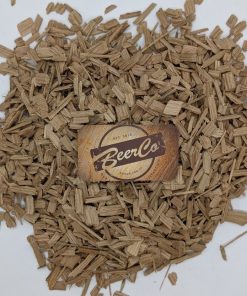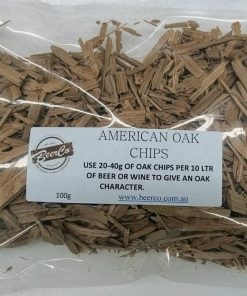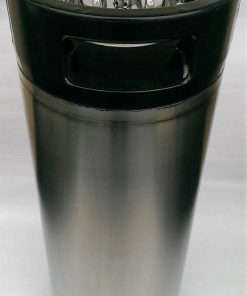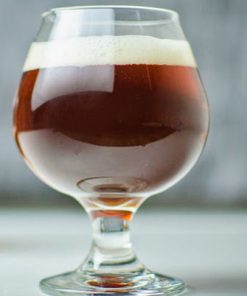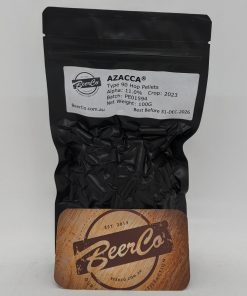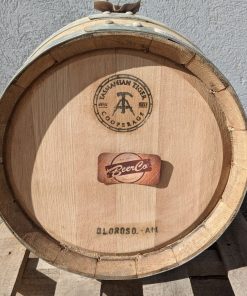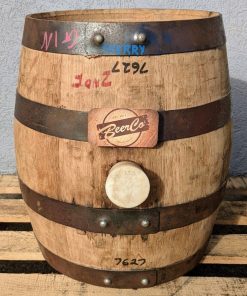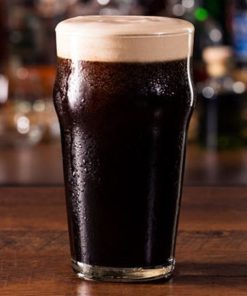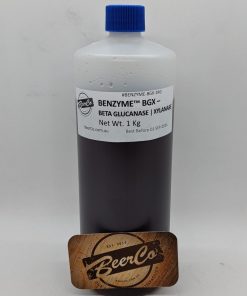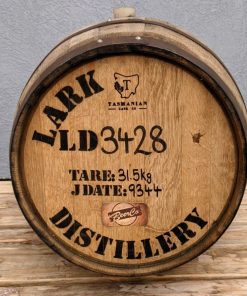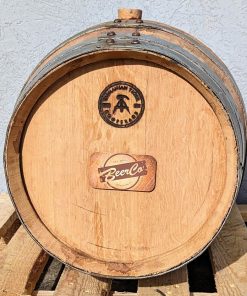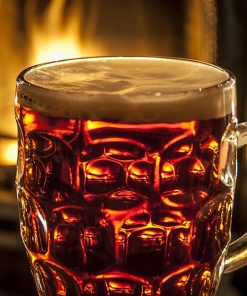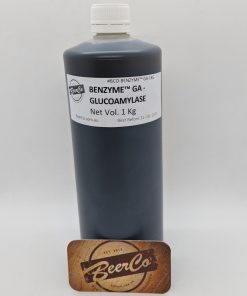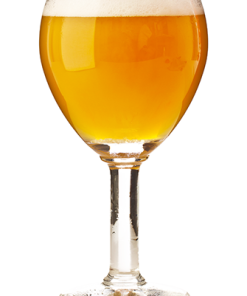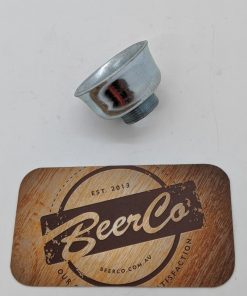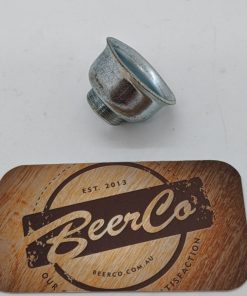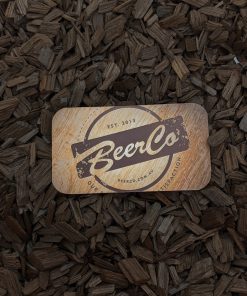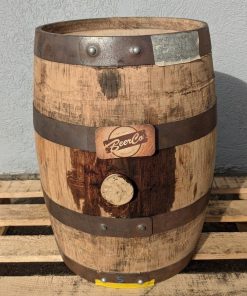Crisp Chevallier Ale Malt Crisp Malting Group
$ 25,80 $ 15,48
Chevallier is a heritage barley variety. It was the first true malting barley and was selected by the Reverend John Chevallier of Suffolk, England in 1824. Chevallier rapidly became the dominant barley variety and by the last decades of the 19th century it was being grown throughout Europe, California, Chile, Australia and New Zealand. In the UK, it was at peak utilisation in the late Victorian era covering some 80-90% of the barley area. After 100 years of brewing success new varieties began to supersede it and production finally ended in the 1930’s.
Working with the John Innes Institute in Norwich, Crisp Malting Group has brought this legendary variety has been brought back into commercial production.
Crisp Chevallier is characterised by warm cracker and biscuit aroma with a full flavor. Compared to many modern barley’s its aroma and flavor are quite pronounced. Suitable for any malt-forward ale, or where increased malt character is needed to balance a high hop load.
Pack Sizes:
- 5 Kg Bag
- 25 Kg Sack (SAVE 20% on 5Kg Price)
- 1 MT Pallet (SAVE 45% on 5Kg Price) Click here for Trade Wholesale
Batch Analysis
- SS19401 Best Before 30 Sep 2022
Typical Analysis
Parameter |
IoB |
EBC |
ASBC |
| Moisture | 4.0% max | 4.0% min | 4.0% max |
| Extract | 303.0 L°/kg | 80.0% | 80.0% |
| Colour | 4.5 – 6.5 EBC | 5.0 – 7.3 EBC | 2.5 – 3.7 °L |
| TN / TP | 1.75 – 1.95% | 10.9 – 12.2% | 10.9 – 12.2% |
| SNR/KI/ST ratio | 37 – 46 | 42 – 52 | 45 – 52 |
| DP/DPWK/Lintner | 55 min IoB | 150 min WK | 60 min °L |
BeerCo.au Recipes featuring Crisp Chevallier Malt:
- Milli | Vanilla Porter
References and Further Reading on Chevallier Ale Malt:
Chevalier (barley).
In the United Kingdom, up until the early 1800s, barley consisted of so-called land races, which were mixtures of types grown from saved seed, and known by exotic names such as “Nottinghamshire Long Ear” and “Old Wiltshire Archer.” By the end of the 19th century, by gradual selection and reselection, a number of malting lines had been developed, the major ones being “Chevalier,” “Archer,” “Spratt,” and “Goldthorpe.”
Chevalier dominated the English crop for around 60 years, and only really started to fall out of favor when William Gladstone repealed the Malt Tax in 1880. The tax on malt was replaced by a tax on beer itself, which meant that British brewers sought to brew more economically. Increasing volumes of cheaper malt were imported from abroad, and rice, maize, and other malt substitutes were countenanced. Though under declining acreage at the time, Chevalier was still winning prizes at the Brewers’ Exhibition in 1914 (which was to be the last). After World War I, Chevalier was to be replaced by the hybrids, “Plumage-Archer” and “Spratt-Archer,” which would dominate the British crop during the inter-war years.
There are several versions of how Chevalier came into existence, the following being from a manuscript History of Debenham (Suffolk) of 1845:
About the year 1820, John Andrews, a labourer, had been threshing barley and on his return home that night complained of his feet being very uneasy, and on taking off his shoes he discovered in one of them part of a very fine ear of barley—it struck him as being particularly so—and he was careful to have it preserved. He afterwards planted the few grains from it in his garden, and the following year Rev. John Chevallier, coming to Andrews’ dwelling (which he owned) to inspect some repairs, saw 3 or 4 ears of the barley growing. He requested that it might be kept for him when ripe. The Reverend gentleman sowed a small ridge with the produce thus obtained, and kept it by itself until he grew sufficient to plant an acre, and from this acre (the year being 1825, or 1826) the produce was 11½ coombs.
Chevalier was a two-row, narrow-eared variety originally classified as Hordeum distichum, and several seedsmen developed their own sub-varieties, so that the description came to cover a wide range of narrow-eared forms of barley. John Chevallier heirs (now Chevallier-Guild) are still involved in fermented beverages, living at Aspall Hall, Debenham, where they operate their successful Aspall Cyder Company.
Beaven, E. S.Barley: Fifty years observation and experiment. London: Duckworth, 1947.
Ian Hornsey in Craft Beer and Brewing Magazine
Craft Beer Examples using Crisp | Chevallier Heritage Malt
6:45 to Raleigh | Lonerider Brewing Co
“We first used Chevallier malt in the fall of 2017 for our annual SMaSH, “6:45 to Raleigh”. It had a great story behind it, and I was really excited to use a malt with some interesting history. The beer turned out to be one of my favorites that we’ve made. The biscuit/cracker flavors it contributed to the beer was outstanding, and also provided some earthiness as well. The lovibond is slightly darker than most English pale malts and it gave “6:45 to Raleigh” a really cool light amber hue. I would absolutely recommend other brewers to use Crisp base malts such as Marris Otter and Chevallier. When making a malt forward beer or an IPA that needs some malt backbone to stand up to hops, Crisp malts can’t be beat. The uniformity of the kernels and consistency of the malt is really amazing.” – Galen Smith – Lone Rider Brewing Company, Raleigh, North Carolina, USA
- Obadiah Poundage | Goose Island Brewing Company
Greene King | Suffolk Pale Ale
Greene King | Vintage Fine Ale
- Using Chevallier heritage malt in Steamin’ Wife (California Common) Lager
| Size | 5KG, 25KG |
|---|
Fast shipping and professional packing
We offer a wide range of shipping options due to our long-running partnerships with UPS, FedEx and DHL. Our warehouse staff are highly trained and will package your items according to our precise and precise specifications. Before shipping, all goods are thoroughly inspected and securely secured. Every day we ship hundreds of packages to our customers from all over the world. This is a sign of our commitment to be the largest online retailer worldwide. The warehouses are located situated in Europe as much as they are in USA.
Note: Orders containing multiple items will have a different processing period for each item.
Before shipping the items, our staff will carry out an extensive inspection of the products you have ordered. The majority of orders are delivered within 48 hrs. The delivery time should be between 3-7 working days.
Returns
We don't manage the stock in our factory and warehouse. Actual stock levels may fluctuate at any moment. Be aware that it's possible that your order will be out of stock after you have placed the order.
Our policy is for 30 days. Unfortunately, if 30 days have passed from the date you purchased the product, we are unable to offer you a return or exchange.
The item must not be used, and it must be in the original packaging. It must also be in the original packaging.
Related products
Brewing Aids
Equipment
Equipment
Equipment
Brewing Aids
Brewing Aids
Brewing Aids
Equipment
Equipment
Equipment
Brewing Aids


